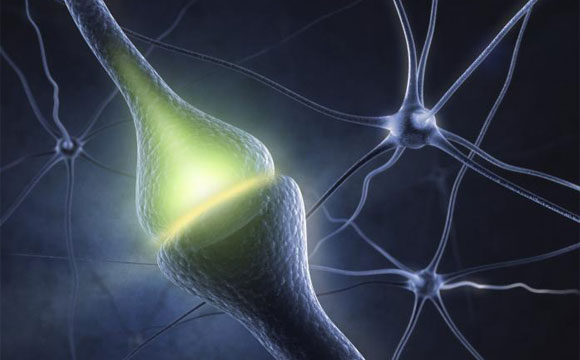Neuroscientists Observe Signs of Synaptic Plasticity Emerging in a Living Brain
 November 3: From the first project David Sheinberg took on as a graduate student in 1989, his work to understand the brain’s visual system has been influenced by a model proposed in 1982 at Brown by Elie Bienenstock, Leon Cooper, and Paul Munro (BCM). Now, somewhat by coincidence, Sheinberg, professor of neuroscience at Brown, is the co-author of a University of Chicago-led study that provides novel evidence reinforcing that model.
November 3: From the first project David Sheinberg took on as a graduate student in 1989, his work to understand the brain’s visual system has been influenced by a model proposed in 1982 at Brown by Elie Bienenstock, Leon Cooper, and Paul Munro (BCM). Now, somewhat by coincidence, Sheinberg, professor of neuroscience at Brown, is the co-author of a University of Chicago-led study that provides novel evidence reinforcing that model.
The question the BCM trio sought to address more than three decades ago was how the brain learns from experience — how it forms persistent neural networks to adapt to what it senses. What was clear to scientists at the time was that the coupling between neurons that became electrically activated in response to stimuli, such as seeing a tree, was not fixed. The electrochemical junction between these neurons, called synapses, could be altered by experience. Cells that fired together would wire together, went the mantra.
But if that’s all there was to it, then huge runaway networks would form around beholding each and every novel thing. What was actually happening was that after the first view of a tree produced an initial burst of neural activity, connections between only a small group of neurons would become enhanced, leading to increased activation in this subset the next time that tree came into view. The BCM theory proposed a model for how a select group of neurons could remain recruited to represent the tree, while most others after the initial hubbub could remain available to process other images without becoming tree watchers forever.
Over the years, as many neuroscientists have continued to study how learning arises from the formation, strengthening, and weakening of synapses — “synaptic plasticity” — most of the evidence has come from observing basic changes among neurons in tissue samples stimulated in the lab or in relatively simple organisms at stages of early development.
It’s never been easy for researchers to observe signs of synaptic plasticity emerging in a living, intact, brain while it accomplishes the feat of beholding and recognizing stimuli.
But the new study does just that. Using measurements of changes in neural activity in neurons of the inferior temporal cortex of mature nonhuman primates as they observed novel and familiar stimuli, the Chicago researchers have mathematically inferred rules about how learning happens at the synaptic level. It turns out those rules reproduce a fundamental prediction of the BCM model.
Sheinberg’s main contribution, as well as that of co-author and former student Luke Woloszyn, was to provide some of the basic neurophysiological recordings to lead author Sukbin Lim and corresponding author Nicolas Brunel, both of the University of Chicago, for their analysis.
“When Nicolas first approached me about my data, I didn’t tell them anything about my own theoretical thoughts about what might underlie the kind of changes that we observed,” Sheinberg said. “So then when he came back and said, ‘My postdoc and I looked at these data and looked at different models that might fit and it looks like a close fit to the BCM model,’ I said ‘Well isn’t that interesting because it was here that that model was first proposed.’”
Specifically what the data show and BCM predicted was that there appears to be a threshold level of activity in the firing rate of neurons involved in processing a stimulus. Neuronal inputs that drive cells to fire at a rate below the threshold — most of them — won’t maintain a strong synaptic connection, while those relatively few neuronal inputs that drive a cell to fire at a rate above the threshold will strengthen their synaptic links. Those are the neurons that remain dedicated to the stimulus.
Cooper, a Nobel Prize co-recipient in 1972 for his work on the physics of superconductivity before he began investigating neuroscience, praised the study. It’s hardly the first to provide supporting evidence, but it does so in a new way.
“This is a very interesting paper,” Cooper said. “It confirms the basic assumptions of BCM synaptic modification by a method very different from those usually employed.”
Sheinberg, too, has known it all along.
“In the back of my mind there had always been this sense in which the BCM theoretical model for plasticity was potentially very profound,” he said.
In addition to Lim, Brunel, Sheinberg, and Woloszyn, the paper’s other authors are Jillian McKee, Yali Amit, and David Freedman.
